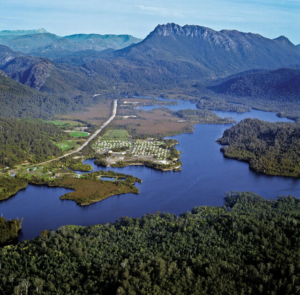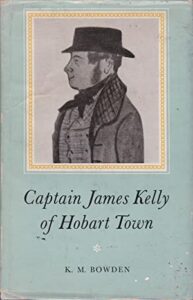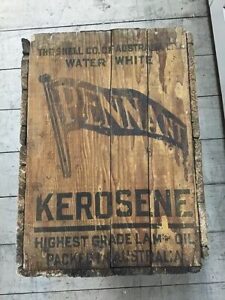We had a bushfire the other day up the road at Tullah. It seems not to have been deliberately started, but a stray cigarette or a spark from an exhaust would suffice as explanation.

Next minute, fire crews were working on the outskirt of the Tullah village through the night and had the blaze on the nearby Mackintosh Dam Road contained by Sunday morning. In the meantime it burnt down one vacant property and a number of sheds. It was contained, but the resources that were thrown at the fire early were spectacular, drawn from all over Tasmania. The fear was that it would get in the pine forests and then it would have rivalled the mainland fires of two years ago. The other danger was fire getting into the peat, which lies at the base of the button grass meadows that constitute so much of the West Coast. Then it could burn for a very long time.
Tullah, by way of explanation, describes itself as a village on Lake Rosebery. It was a settlement built by the Hydroelectric Commission when one of their schemes was to dam the Tasmanian West Coast (or was it damn?). It would have culminated in the Franklin River being dammed, which would have had a great impact on the region.
Returning to Tullah, the older part of this township lies directly on the Murchison Highway. An old silver lead mining area, it consists of a pub and a few houses and displays one of those famous locomotives now cast onto an Australian coin – Wee Georgie Wood. It was used to transport the ore before there were any roads and was in that part of the township threatened by the fire.
Having had experience some years ago of a fire initiated as a “burning-off” exercise by the Department of Parks and Wildlife (laughingly referred to then as that of Sparks and Wildfire) on the ridge behind our house in which we lost a shed containing most of our stored linen, it was great to read how much the fire fighting service has picked up its game.
One of the newer residents of Tullah, who runs a microscopically-sized café with excellent coffee (and a resident alpaca), was obviously relieved when the fire was halted on the outskirts.
Tullah is on the edge of the West Coast wilderness area, which has some of the most undefiled temperate rain forest in the world. Because of the high rainfall, an average of 240cm a year, it has been thought of as somewhat protected from fires. Ironically the wettest place is actually Tullah, with an average annual rainfall of 280cm. So this recent blaze serves as a warning. Climate change is coming – I’m not clever enough to calculate how quickly and how selective will be the change. Yet the forests of the West Coast and South-west are vulnerable. Whether one believes that the forested wilderness is little changed since the time when the dinosaurs walked the earth, it becomes all so academic if this part of Australia catches alight as has occurred periodically in NSW and Victoria.
Ubertas et Fidelitas
An interesting datum. The state which has the highest identification of its inhabitants as Aboriginal people is Tasmania (close to five per cent). As a person who grew up believing the last Tasmanian was Truganini, as I have grown older, I have been surprised by the number of Tasmanian Aborigines who emerged from “among the Huon pine”.

We have purchased several traditional Aboriginal Maireener shell necklaces, with their characteristic iridescence. Much of this art form is concentrated on the Flinders Island in Bass Strait. We have other cleverly executed pieces of Aboriginal art with a Tasmanian tag – but seemingly made in the last 20 years. My problem is connecting them to a tradition that shows areas of petroglyphs and middens on the shore which have survived the often violent storms which characterised that part of Tasmania for millennia.
To celebrate Tasmania Day in 1986, a collection of papers from the early days of Tasmania was published, including that of Captain James Kelly’s voyage, which commenced on 27 December 1815.
Then James Kelly sailed out of Hobart in a five-oared whale boat, with four men, John Griffiths and George Briggs, who were described as native to the colony and two others described as “European” William Jones and Thomas Toombs, the last named’s previous occupation being listed as“bushranger”. King’s aim was to circumnavigate Tasmania and, as part of this voyage, he discovered Macquarie Harbour. This harbour, the third largest in Australia, has a treacherous entrance, which was later christened Hell’s Gate. The weather was very compliant as they came into the Harbour under the smokescreen from the Aboriginal fires at the Heads. They reckoned that enabled them not to be seen initially. They spent some time and made contact with a number of Aborigines, warriors with whom they developed an uneasy relationship.
However, when leaving the newly discovered Harbour, which Kelly named after the then Governor Lachlan Macquarie, (whose territory then incorporated both NSW and Tasmania), the fury of Hell’s Gate kicked in and they were lucky to survive.
The insights into Aboriginal life and the interaction with the whitefellas is expressly discussed under the heading of “female sealing”. Seeing how they went about harvesting the seals obviously astonished the diarist. The women showed a distinctive methodology, as though they had to commune before killing the seals. It shows how important the description of Aboriginal life, when the only chroniclers of the day-to-day activity came from these early reported interactions, at a time before extermination became government policy with the inevitable destruction of the social fabric.
The recent literature trying to show that the Aboriginal tradition progressed from the hunter-gatherer society to one of adopting the tenets of the agricultural revolution as its origin is promoted by a number of Australians who claim Aboriginal descent and are clustered around the University of Melbourne. From what I have read, I do not believe it to be so. Take this excerpt.
 The description of female sealing in the Bass Strait islands is a prime example. No mention of herbs and spices in cooking the young seal. Having personally been one of those who have tasted seal, I would suggest it is not among my top ten gustatory phenomena.
The description of female sealing in the Bass Strait islands is a prime example. No mention of herbs and spices in cooking the young seal. Having personally been one of those who have tasted seal, I would suggest it is not among my top ten gustatory phenomena.
“We gave, says the journal of the exploring party, the women each a club that we had used to kill the seals with. They went to the water’s edge and wet themselves all over their heads and bodies, which operation they said would keep the seals from smelling them as they walked along the rocks. They were very cautious not to go to windward of them, as they said “a seal would sooner believe his nose than his eyes when a man or woman came near him.” The women all were about nine or ten seals upon each rock. Lying apparently asleep. Two women went to each rock with their clubs in hand, crept closely up to a seal each, and lay down with their clubs alongside. Some of the seals lifted their heads up to inspect their new visitors and smell them. The seals scratched themselves and lay down again.
The women went through the same motions as the seal, holding up their left elbow and scratching themselves with their left hand, taking and keeping the club firm in their right ready for the attack. The seals seemed very cautious, now and then lifting up their heads and looking round, scratching themselves as before and lying down again; the women still imitating every movement as nearly as possible. After they had lain upon the rocks for nearly an hour, the sea occasionally washing over them (as they were quite naked, we could not tell the meaning of their remaining so long) all of a sudden the women rose up on their seats, their clubs lifted up at arms length, each struck a seal on the nose and killed him; in an instant they all jumped up as if by magic and killed one more each. After giving the seals several blows on the head, and securing them, they commenced laughing aloud and began dancing. They each dragged a seal into the water and swam with it to the rock upon which we were standing, and then went back and brought another each, making twelve seals, the skins of which were worth one pound each in Hobart Town. This was not a bad beginning for the black lakes (sic), who now ascended to the top of a small hill, and made smokes as signals to the natives on the main that they had taken some seals. The smokes were soon answered by smokes on the beach. We skinned the seals and pegged them out to dry. The women then commenced to cook their supper, each cutting a shoulder off the young seals weighing three or four pounds. They simply threw them on the fire to cook, and when about half done commenced devouring them, and rubbed the oil on their skins, remarking that they had a glorious meal.
As I said above, food for thought!
Reflection in the Pool of the Land of the Anziani
I suspect that the aged care portfolio has caught up with the politicians because when it is part of the health portfolio, it tends to be cast into “the too hard basket”. Yet with the increase in longevity and the growth of the private nursing home sector as a lucrative business for the owners, government responsibility should have increased not lessened in maintaining our aged through the time of life when a person becomes increasingly dependent on others. Once into the nursing home it is very much one way, but it should not be a nightmare.
When I had my 70th birthday, I half believed the axiom “that 70 was the new 50”. Three years later and that concept went into the rubbish bin.
For myself, the acute phase of the disease took a long time to settle into a chronic burn, and as the years have passed the co-morbidities have accumulated until now I can no longer live independently. In previous times, there may have been an array or servants, but in the modern world this not feasible without wealth.
I had two aunts who entered nursing homes in their nineties, wealthy women who were able to afford a nursing home where all the “creature comforts” were available and provided. What struck me was the number of Filipino and Nepalese nurses, both male and female, and feeling of optimism in this establishment. But it was at the high end. They were both dead before the Virus struck and surveying the conditions in that nursing home gave no reason for me to worry about their care, even as one increasingly succumbed to fronto-temporal dementia.
The Virus has taken a toll in other ways. I used to go to hydrotherapy twice a week. The hydrotherapy pools where there are supervised programs have vanished, as the pools have closed because of the Virus. This gets no coverage, but when one depends essentially on allied health professional services, the Virus has curtailed them, and with any such program, once they cease so too do the levels of personal fitness and social interaction decline. Gyms get all the publicity, but circumstances for the aged are probably worse once you lock people in their rooms with staff barely having the requisite nursing skills let alone those of allied health professionals.
Some of the drugs required for my treatment, such as the corticosteroids are essential but impose complications. I had the rapid development of drug induced cataracts, both of which have resulted in new improved lens (no longer any astigmatism). Otherwise I have eschewed operative intervention. Some of the operations had the potential to make life worse, and I value the fact that I can still communicate. The bottom line is that if I did not have my wife, who is a very caring individual, I would be facing institutionalisation and all the uncertainty that entails.
My sleeping arrangements have been modified, so I am close to the toilets. I still have been negotiating stairs. My fall a few months ago emphasised the line between having my immediate daily care and then having to wait face down for someone to come after nearly two hours. I have learnt to curb my impetuosity, since change is now a one way trek, but the nursing home looms as a prison, with the likelihood of solitary confinement.
And a Minister in charge of this crisis who goes to the cricket for three days! He has either given up, or else needs a cognitive test to assess whether he needs the pity for a person with early dementia. Or is he just callously insensitive? I cannot believe that this man is functioning normally; but then the last people who are considered to have such pathology are those with the public relations machinery of denial. Morrison has demonstrated himself to be a Prime Minister with zero human relations skills but with a formidable expenditure on public relations.

Having experienced Bronwyn Bishop’s hair-raising approach to any portfolio in which she was put, I thought that disclosure of kerosene baths in nursing homes under her watch would have elicited a positive reaction for reform. There was the predictable furore and then nothing. Even Royal Commissions do not move the dial, because the people trapped in nursing homes have virtually no say.

The idea of little children mingling with the elderly as gleaned from the ABC TV program has long since been suspended because of the Virus, but it is ironic to see a photograph of myself at two years of age with the wide gait; and realise that I am not that much different now because of loss of proprioception.
I remember a child staring at me from a stroller; I was in a wheelchair.
“Don’t worry son, you’ll be here soon enough.” He was too young to understand, but it certainly brought home to me the irony of existence. His parents did hear me, and laughed. Vulnerability is the product of the child in the stroller and the guy in the wheelchair.
The role of government intervention in both areas has demonstrated the difficulty, because childcare and care of the aged have both been exploited, and over a long period. The failure of the religious institutions in these areas has been shown, and in many areas, disgraceful exploitation has emerged – yet these institutions keep their charitable status in regard to taxation
The whole failure of government intervention has been compounded by the laissez-faire approach to looking after the elderly – maximising profits by exploiting the elderly is a spreading stain on the Australian community.
I can only watch the stain come closer because I have no confidence in the area being afforded the priority it needs and which one only realises as 80 is the new 80.
Yet during my professional life I have sought solutions, but many of the schemes in which I have invested myself have reverted after I have gone. Some have survived.
Is there a solution?
Over my professional life, one way or another, I have had considerable contact with care for the aged in its various forms. The problem with being old as described above is that nevertheless it is not a homogeneous product. People age with different disabilities and hence needs.
The problem with age is that it comes at a point when nothing more can be done for you, but to ensure you are comfortable, pain free, not isolated, able to use the toilet facilities, and that your medications are regularly reviewed, and you have enough to eat and drink and to operate at the higher end of your residual competency.
To accomplish this properly requires both a high level of management skills and continuity of these skills; thus the competency of a clinical manager of each facility should be recognised and rewarded appropriately and succession planning encouraged.
I am a great believer that credentialing and privileging should be undertaken not only in health services but also in nursing homes. I am a purist as I have retained “credentialing and privileging”, whereas others have replaced “privileging” with “scope of practice”. In fact, the process has four stages –
(a) Credentialing is self-evident as it is based around the qualification.
(b) “The scope of practice” is what is requested by the health professional, but
(c) privileging depends on the capability of the health service and confidence of the director of clinical services (or equivalent) that the requested scope of practice is appropriate and safe given the resources of the health service.
(d) approval of the board on the recommendation of the credentialing and privileging Committee
All recommendations to the Board must involve the director of clinical services and if the terminology is correct, the nursing home manager who should be a nurse.
To me that is a very simple statement of intent, and I was able to successfully implement such a process among a number of small health services over a decade. To me, it satisfied the requirement of the clinician and the administrator and it made those involved take it seriously. In the private sector, that includes the owner (or representative). In my health service experience the hospital board was very visible, but in the nursing home sector, who knows in the tangled web of business resulting in the lack of oversight in this sector. And with the obscenity of some of the owners with more concern with having the latest Lamborghini, it is a massive task to permanently change the culture when the government is basically uninterested.
When I suggested that the nursing homes be included in the regional credentialing and privileging scheme, the pushback from the Commonwealth Department of Health was fierce. The nursing home was the person’s home; it was not a quasi-health institution, it was said. The residents could have whomsoever they wanted as carers, without interference from government, and certainly by such a scheme which attempted to codify standards. God, no.
Yet there is an unfortunate strain of authoritarian behaviour which I have seen in the transition stage between hospital and nursing home. In the acute hospital, for some of the staff, an old person admitted is an old person to be get rid of, because of his or her occupancy of an expensive acute bed.
As the hospitals move from metropolitan teaching hospitals, the pressure on the bed is not as great. Nevertheless I once was faced with an officious nurse who was attempting to threaten me because I believed my father-in-law needed more time in the acute bed before being sent to a so-called “sub-acute care” environment. She attempted to stand over me by threatening to have him placed in a nursing home in a far-off town where he would have no-one able to visit him easily. After a strong word, that option was removed and he stayed in the hospital for some further period until he was well enough to be transferred. Nevertheless influence, like information, is asymmetric.
The fiction that a nursing home is a domestic situation is nonsense, because of the nature of the residents, who need personalised care but which is often left wanting because staff levels are squeezed for a number of reasons – profit margins, COVID-19 restrictions, poor pay and conditions.
 Some nursing homes are attached to the public hospital. Therefore, I was in a position to influence the rules for visiting doctors. My initial approach was to look at the drug charts of each resident as this gives one an idea of how often the resident is reviewed by a doctor. The need for documentation is as essential as regular visits by the local general practitioner, and each nursing home should have access to a consultant geriatrician or specialist in rehabilitation medicine (and ensure one or the other visits regularly).
Some nursing homes are attached to the public hospital. Therefore, I was in a position to influence the rules for visiting doctors. My initial approach was to look at the drug charts of each resident as this gives one an idea of how often the resident is reviewed by a doctor. The need for documentation is as essential as regular visits by the local general practitioner, and each nursing home should have access to a consultant geriatrician or specialist in rehabilitation medicine (and ensure one or the other visits regularly).
The requirement for allied health cascades from this overall need to ensure that in a world of specialisation and constantly improving technology, the aged are not deprived of the benefits of these advances.
In the health area where there is increasing specialisation, the pool of generalists in all fields becomes limited. The concept of nursing staff in rural areas acquiring some of the basic skills of allied health professionals has been regularly canvassed. Whatever the current state of this move to develop generalists should accommodate that some of the generalists will develop special area on interest and hence expertise.
The suggestion of “care finders” adds another layer without any improvement. To establish a new professional group is to establish a new bureaucracy, not necessarily improve care of the aged.
I well remember the country hospital which was converted from a general practice procedural hospital to one concentrating on geriatric treatment. The “driver” was a doctor who persuaded the staff to re-train from the theatre to treating the aged. He was successful and well-liked but did not want any limelight – and presumably this pilot program died with him.
However, successful models abound. The problem is each requires a certain discipline, dedication and time to implement and maintain. To change the culture is not just taking a pill. Governments, when pressed, can be reasonable at getting the input right through the multitude of ways enquiries can be organised.
 Government falls down in the implementation. Many of the ministers and the bureaucrats think that fussing over the nature of enquiry is enough, and unfortunately too much of the intellectual capital is invested in the initial enquiry and its report. In fact, the report is only the start; but too often it is the end point, gathering dust with so many others.
Government falls down in the implementation. Many of the ministers and the bureaucrats think that fussing over the nature of enquiry is enough, and unfortunately too much of the intellectual capital is invested in the initial enquiry and its report. In fact, the report is only the start; but too often it is the end point, gathering dust with so many others.
In the end it is the clinical management standard that counts.
One question, what is the best private nursing home in Australia; and what is the best public nursing home?
In such a search, the common feature I postulate will be the ongoing standard of the clinical management team. Appropriate credentialling and privileging should be able to validate that approach.
In the end I want to know what works; and what has worked over a generation at least. Imprecise, but once you see success, you know what it is. To achieve this insight, experience helps.
Mouse Whisper
Just two items for Trivial Squeaksuit (obviously in a cat-free environment – pur is a palavra proibida).
- Who is Dorothy Gale?
- Who is Barbara Millicent Roberts?
Dorothy, the heroine in the Wizard of Oz.
Barbie doll.
Simple really.

